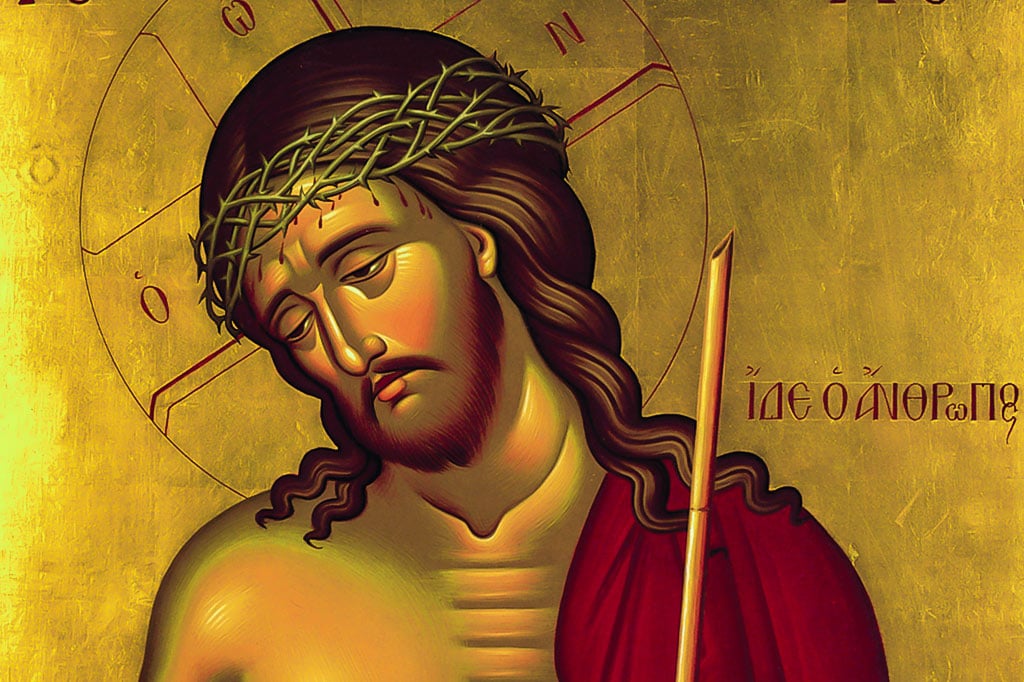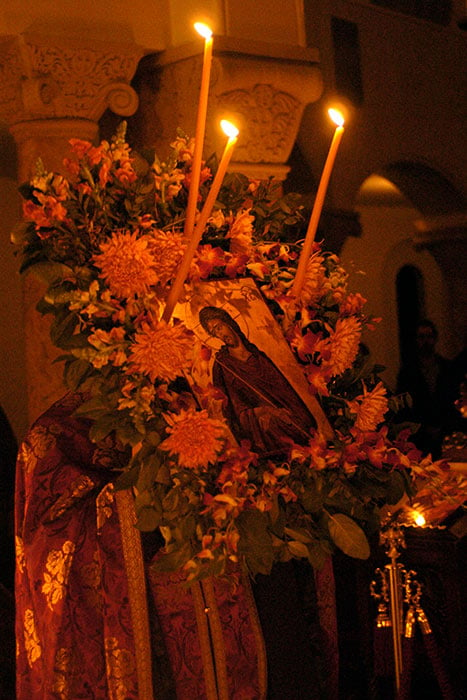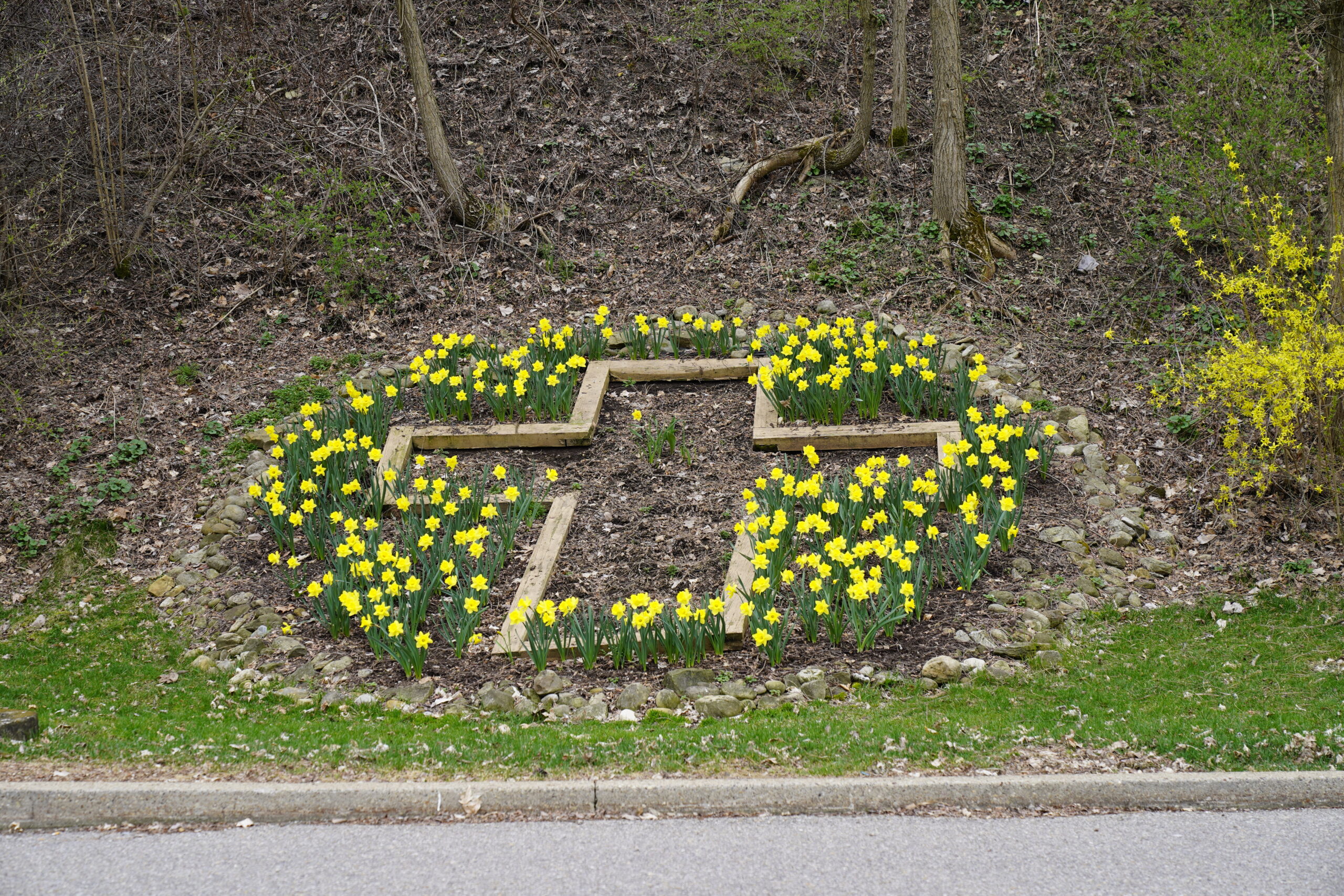GREAT AND HOLY MONDAY – APRIL 29, 2024
Below are resources and ways to experience church during Holy Week.
Watch the Church Livestream
For a larger view of the video and the current schedule, click here.
Great & Holy Monday Schedule of Services
All holy week services will be livestreamed on our church website.
- 9:00 am – Presanctified Liturgy
- 6:30 pm – Orthros of Great Tuesday (Second Bridegroom Service)
Services of the Bridegroom
(content taken from the Greek Orthodox Archdiocese of America)

Introduction
Beginning on the evening of Palm Sunday and continuing through the evening of Holy Tuesday, the Orthodox Church observes a special service known as the Service of the Bridegroom. Each evening service is the Matins or Orthros service of the following day (e.g. the service held on Sunday evening is the Orthros service for Holy Monday). The name of the service is from the figure of the Bridegroom in the parable of the Ten Virgins found in Matthew 25:1-13.
Background
The first part of Holy Week presents us with an array of themes based chiefly on the last days of Jesus’ earthly life. The story of the Passion, as told and recorded by the Evangelists, is preceded by a series of incidents located in Jerusalem and a collection of parables, sayings and discourses centered on Jesus’ divine sonship, the kingdom of God, the Parousia, and Jesus’ castigation of the hypocrisy and dark motives of the religious leaders. The observances of the first three days of Great Week are rooted in these incidents and sayings. The three days constitute a single liturgical unit. They have the same cycle and system of daily prayer. The Scripture lessons, hymns, commemorations, and ceremonials that make up the festal elements in the respective services of the cycle highlight significant aspects of salvation history, by calling to mind the events that anticipated the Passion and by proclaiming the inevitability and significance of the Parousia.
The Orthros of each of these days is called the Service of the Bridegroom (Akolouthia tou Nimfiou). The name comes from the central figure in the well-known parable of the ten virgins (Matthew 25:1-13). The title Bridegroom suggests the intimacy of love. It is not without significance that the kingdom of God is compared to a bridal feast and a bridal chamber. The Christ of the Passion is the divine Bridegroom of the Church. The imagery connotes the final union of the Lover and the beloved. The title Bridegroom also suggests the Parousia. In the patristic tradition, the aforementioned parable is related to the Second Coming; and is associated with the need for spiritual vigilance and preparedness, by which we are enabled to keep the divine commandments and receive the blessings of the age to come. The troparion “Behold the Bridegroom comes in the middle of the night…”, which is sung at the beginning of the Orthros of Great Monday, Tuesday and Wednesday, relates the worshiping community to that essential expectation: watching and waiting for the Lord, who will come again to judge the living and the dead.
Holy Monday

On Holy Monday we commemorate Joseph the Patriarch, the beloved son of Jacob. A major figure of the Old Testament, Joseph’s story is told in the final section of the Book of Genesis (chs. 37-50). Because of his exceptional qualities and remarkable life, our patristic and liturgical tradition portrays Joseph as tipos Christou, i.e., as a prototype, prefigurement or image of Christ. The story of Joseph illustrates the mystery of God’s providence, promise and redemption. Innocent, chaste and righteous, his life bears witness to the power of God’s love and promise. The lesson to be learned from Joseph’s life, as it bears upon the ultimate redemption wrought by the death and resurrection of Christ, is summed up in the words he addressed to his brothers who had previously betrayed him, “’Fear not … As for you, you meant evil against me; but God meant it for good, to bring about that many people should be kept alive, as they are today. So do not fear; I will provide for you and your little ones.’ Thus he reassured them and comforted them” (Genesis 50:19-21). The commemoration of the noble, blessed and saintly Joseph reminds us that in the great events of the Old Testament, the Church recognizes the realities of the New Testament.
Also, on Great and Holy Monday the Church commemorates the event of the cursing of the fig tree (Matthew 21:18-20). In the Gospel narrative this event is said to have occurred on the morrow of Jesus’ triumphant entry into Jerusalem (Matthew 21:18 and Mark 11:12). For this reason it found its way into the liturgy of Great Monday. The episode is also quite relevant to Great Week. Together with the event of the cleansing of the Temple this episode is another manifestation of Jesus’ divine power and authority and a revelation as well of God’s judgment upon the faithlessness of the Jewish religious classes. The fig tree is symbolic of Israel become barren by her failure to recognize and receive Christ and His teachings. The cursing of the fig tree is a parable in action, a symbolic gesture. Its meaning should not be lost on any one in any generation. Christ’s judgment on the faithless, unbelieving, unrepentant and unloving will be certain and decisive on the Last Day. This episode makes it clear that nominal Christianity is not only inadequate, it is also despicable and unworthy of God’s kingdom. Genuine Christian faith is dynamic and fruitful. It permeates one’s whole being and causes a change. Living, true and unadulterated faith makes the Christian conscious of the fact that he is already a citizen of heaven. Therefore, his way of thinking, feeling, acting and being must reflect this reality. Those who belong to Christ ought to live and walk in the Spirit; and the Spirit will bear fruit in them: love, joy, peace, patience, kindness, goodness, faithfulness, gentleness, self-control (Galatians 5:22-25).
Icon of the Bridegroom
“The Bridegroom” Icon portrays Christ during His Passion, particularly during the period when our Lord was mocked and tortured by the soldiers who crowned Him with thorns, dressed Him in purple and placed a reed in His Hands, jeering Him as the “King of the Jews.”
Orthodox Christian Celebration of the Bridegroom Service

The services conducted on Palm Sunday evening and on the evenings of Holy Monday and Tuesday are the Matins or Orthros services of the following day. After the reading of the Psalms at the beginning of the service the Troparion of the Bridegroom Service is chanted three times. On Palm Sunday evening as this hymn is being chanted, the priest carries the icon of Christ as Bridegroom in procession. The icon is placed in the middle of the solea of the church and remains there until Holy Thursday.
The Matins Gospel readings for each of the Bridegroom Services are: Holy Monday – Matthew 21:18-43; Holy Tuesday – Matthew 22:15-46, 23:1-39; and Holy Wednesday – John 12:17-50).
In most parishes a Presanctified Liturgy will be conducted on the mornings of Holy Monday, Tuesday, and Wednesday. The Liturgy of the Pre-Sanctified Gifts has a distinct character and order. It is comprised of three major parts or components: a) the service of Great Vespers peculiar to this Liturgy; b) the solemn transfer of the Pre-Sanctified Gifts to the Holy Table; and c) the preparation for and the distribution of holy Communion. The Liturgy does not contain the Anaphora, the Gifts of the bread and wine having been consecrated at the Divine Liturgy on the previous Sunday or Saturday.
The Scripture readings for each of the Presanctified Liturgies are: Holy Monday – Exodus 1:1-21, Job 1:1-12, Matthew 24:3-35; Holy Tuesday – Exodus 2:5-10, Job 1:13-22, Matthew 24:36-26:2; Holy Wednesday – Exodus 2:11-23, Job 2:1-10, Matthew 26:6-16.
Hymns of the Bridegroom Service
Troparion
Behold, the Bridegroom cometh in the middle of the night, and blessed is that servant whom He shall find watching; and again unworthy is he whom He shall find heedless. Beware, therefore, O my soul, lest thou be overcome with sleep, lest thou be given up to death, and be shut out from the Kingdom. But rouse thyself and cry: Holy, Holy, Holy art Thou, O God, through the Mother of God, have mercy on us.
Exapostelarion
Thy bridal chamber, O my Saviour, do I behold all adorned, and a garment I have not that I may enter therein. Illumine the garment of my soul, O Giver of Light, and save me.
References
The Lenten Triodion, translated by Mother Mary and Kallistos Ware (South Canaan, PA: St. Tikhon’s Seminary Press, 1994), pp. 59-60, 511-547.
Calivas, Alkiviadis C. Great Week and Pascha in the Greek Orthodox Church (Brookline: Holy Cross Press, 1992), pp. 29-49.
Farley, Donna. Seasons of Grace: Reflections on the Orthodox Church Year (Ben Lomond, CA: Conciliar Press, 2002), pp. 130-132.
Wybrew, Hugh. Orthodox Lent, Holy Week and Easter: Liturgical Texts with Commentary (Crestwood, NY: St. Vladimir’s Seminary Press, 1997), pp. 89-100.
Icon of Christ The Bridegroom provided by Theologic and used with permission.
Photos courtesy of John Thomas and used with permission. Experience more of Holy Week in pictures through John Thomas’ book “Sacred Light: Following the Paschal Journey”
Holy Week 2024 – Schedule of Services
Lazarus Saturday – April 27
8:30 am – Orthros and Divine Liturgy
5:00 pm – Vespers of Palm Sunday
Palm Sunday – April 28
8:15 am – Orthros and Divine Liturgy
5:00 pm – Orthros of Great Monday (First Bridegroom Service)
Great and Holy Monday – April 29
9:00 am – Presanctified Liturgy
6:30 pm – Orthros of Great Tuesday (Second Bridegroom Service)
Great and Holy Tuesday – April 30
9:00 am – Presanctified Liturgy
6:30 pm – Orthros of Great Wednesday (Third Bridegroom Service)
Great and Holy Wednesday – May 1
9:00 am – Presanctified Liturgy
3:00 pm – Sacrament of Holy Unction (Ἱερὸν Εὐχέλαιον)
6:30 pm – Orthros of Great Thursday (with second anointing)
Great and Holy Thursday – May 2
9:00 am – Vesperal Divine Liturgy of St. Basil (The Institution of the Eucharist)
6:30 pm – Orthros of Great Friday (Service of the Passion and Twelve Gospels)
10:00 pm – Vigil by the Cross, and GOYA making sandwiches for the homeless
Great and Holy Friday – May 3
9:00 am – Royal Hours
3:00 pm – Vespers (Taking down from the Cross/Ἀποκαθήλωσις)
6:15pm Trisagion by Tomb
6:30 pm – Orthros of Great Saturday
(With Praises at the Tomb of Christ (Ἐγκώμια) and Procession of the Epitaphios)
Great and Holy Saturday – May 4
9:00 am – Vesperal Divine Liturgy of St. Basil (“First Resurrection”)
10:00 pm – Nocturnes 10:30 pm – Receive the Light
11:00 pm Paschal Orthros and Divine Liturgy of the Resurrection
Agape meal follows in the Community Center
Great and Holy Pascha – Sunday, May 5
12:00 Noon – Agape Vespers (Reading of the Gospel in various languages)
Renewal (“Bright”) Tuesday & Feast of Sts. Raphael, Nicholas & Irene of Lesbos – May 7
9:00 am – AT DORMITION CHURCH, OAKMONT: Paschal Orthros and Divine Liturgy
Life Giving Spring – Friday, May 10
8:15 am – Orthros / 9:30 am – Divine Liturgy

